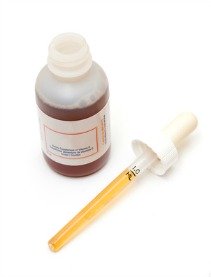- Home
- Vitamin D
Vitamin D Benefits for Skin Care
Visit this
PICTURES OF RASHES PAGE
There are numerous Vitamin D benefits for your skin and overall health. Unfortunately, unlike other vitamins such as vitamin c or vitamin e, vitamin d is often overlooked despite its importance in dealing with skin care problems such as psoriasis.
Vitamin d is a fat-soluble vitamin and a powerful antioxidant and anti-carcinogen. It exists in several forms. Calciferol is the most active form of the vitamin. Once produced or ingested, the liver and kidneys act on the vitamin d to convert it into an active form that the body can use.
Why is vitamin d important for good health?
There are several vitamin d benefits for your body. It is essential for:
- the formation of healthy and strong teeth, bones, and nails
- healthy eyes
- the proper absorption of calcium by the body and the regulation of calcium and phosphorus levels in the blood
- enhancing the absorption of vitamin a and vitamin c and other important elements
- proper neuromuscular function
- preventing osteoporosis (because it aids in calcium absorption), depression or schizophrenia, prostate cancer, breast cancer, ovarian cancer, colon cancer
- helping to treat conditions such as diabetes and obesity
- possibly preventing the onset of multiple sclerosis
- maintaining a healthy immune system

What are the signs of a vitamin d deficiency?
If you have a deficiency in vitamin d, then you will not be experiencing the vitamin d benefits for your skin and body. There are certain signs or health conditions that individuals need to be aware of that may indicate that the body is lacking enough vitamin d to function properly. These indicators are:
- dental decay – too many cavities developing and weak or brittle teeth in general
- rickets or weak, brittle, and defective bone growth
- a diabetes condition that is becoming worse because insulin production by pancreas is affected
- lack of energy
- trouble sleeping or insomnia
- nervousness
- diarrhoea
What are the sources of vitamin d?
In order to obtain the vitamin d benefits you need to know the sources of vitamin d and how to get vitamin d into your body so that it can perform its function. This may be rather easy to do for one reason and quite difficult for other reasons. Three main sources of vitamin D (vitamin D3 and vitamin D2) are exposure of the skin to sunlight, various types of food such as fish, fortified foods, and supplements.
The reason why vitamin d can be easy to obtain is because the main source is simply exposure to sunlight of unprotected skin while outdoors.When the skin is exposed to sunlight and more specifically the UVB or ultraviolet-B rays present in sunlight, vitamin D3 is manufactured in the skin. As a general rule, about ten to fifteen minutes of direct sun exposure three times a week is required to keep vitamin D levels at the required amounts in the body.
However, despite sunlight exposure being a great and easy way of generating vitamin D, it is not necessarily always the main source of this vitamin for some individuals. Dark skinned individuals, people in northern climates, people that do not get outdoors enough, people in polluted environments, and people who need to take extreme caution with sun exposure due to concerns with skin cancer, are all cases where sunlight may not be one of the main sources of vitamin D generation.
Although this is a very easy way to get vitamin d into your body and reap the vitamin d benefits, sun exposure must be controlled. Too much sun exposure will lead to skin cancer and premature skin aging. Five to ten minutes of daily summer sun exposure on unprotected skin such as the face, hands, arms, and back will provide enough ultra violet light exposure to produce the required amount of vitamin d for the body.
Dark skinned individuals need greater amounts of sun exposure in order for their skin to produce the same amount of vitamin d as for lighter skinned individuals. Other factors such as proximity to the equator, time of day, time of year, cloud cover, and pollution all play a role in reducing the amount of ultra violet light exposure and vitamin d production by the skin.
It is difficult for many individuals to get enough vitamin d via diet alone. Sunlight exposure is the best and most efficient way to reap the vitamin d benefits for your skin and body. If you are unable to get enough sun exposure, closer attention must be paid to diet in order to get the proper levels of vitamin d that the body requires.
Recent reports by experts are saying that we need more vitamin d in our bodies in order to get the proper vitamin d benefits. This recognizes the important role that vitamin d plays in good overall health.
Old or standard recommendations for daily intake of vitamin d are:
- for adults less than 50 years old – 200 IUs
- for adults in the 50 to 70 year old range – 400 IUs
- for adults over the age of 70 – 700 IUs
New daily intake numbers of vitamin d being suggested by some experts are :
- for adults less than 50 years old – 1000 to 2000 IUs
- for adults in the 50 to 70 year old range – 1000 to 2000 IUs
- for adults over the age of 70 – 1000 to 2000 IUs
More specific recommendations can be found at the vitamin d dosage page.
Note IUs stands for International Units. It has been previously thought that vitamin d intake amounts above 1000 IUs may produce some unwanted side effects. Therefore, before increasing intake levels of vitamin d to these new levels, please discuss the issue with your physician.
So which foods are the best sources of vitamin d? Listed are some food sources of vitamin d: milk, cold liver oil, salmon, mackerel, sardines, tuna, egg yolks, beef liver, and fortified cereals. More information can be found at the vitamin d foods link.
Check labels to see if the food is a source of vitamin d and to what degree a certain quantity of that food fulfills the daily requirement. Alternatively, vitamin d supplements may be required. This should be done under the guidance of a physician. As with most vitamins, too much intake can produce health problems.
Vitamin D Benefits for the Skin
The skin and vitamin d are closely related because of how vitamin d is produced. However, there are also specific vitamin d benefits for the skin.
Psoriasis vitamin d benefits
Vitamin d is widely used around the world to treat this skin problem. Vitamin d plays a role in skin cell metabolism and growth. Therefore, it has shown some effectiveness in treating itching and flaking which are common symptoms of this skin problem. Studies have indicated that over the counter type vitamin d creams are not very effective at treating psoriasis because they do not contain the active vitamin d derivative. The active vitamin d form is only available in prescription creams or supplements. Several weeks of treatment are normally required to relieve the psoriasis symptoms. A big advantage is that vitamin d creams have few side effects, unlike steroid containing creams.
UVB treatments can also help relieve psoriasis. One of the main reasons is that these treatments produce vitamin d and therefore vitamin d benefits in the skin naturally.
In addition, because one of the vitamin d benefits is to act as a powerful antioxidant, vitamin d can play a role in preventing the premature aging of skin and damage to the skin structure.
